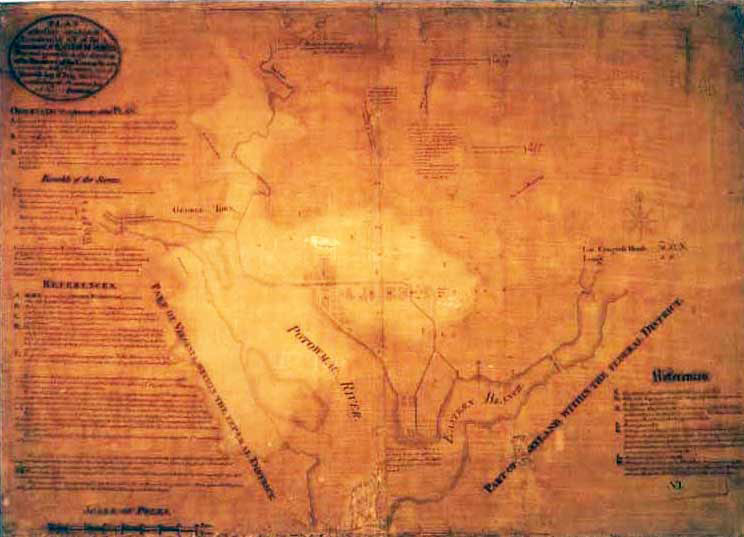Washington the New Capital

Congress opened its session in Washington, D.C. on November 17th. Adams moved into the White House, only to find the walls still wet. In a letter to his wife, Adams wrote: "I pray Heaven to bestow the best of blessings on this house and all that shall hereafter inhabit it. May none but the wise and honest men ever rule under this roof."
After the decision to locate the capital in the South, the Residence Act of 1790 was passed to enable the building of the capital in the District of Columbia. President Washington took a direct interest in the development of the capital, but it was Secretary of State Thomas Jefferson who was directly responsible for the initial implementation. Jefferson submitted an initial plan, and then French engineer Major Pierre Charles L'Enfant was selected to develop a plan for the city. L'Enfant submitted the plan that exists to this day: a radial series of avenues on a grid system of streets.
Washington himself selected the exact location of the city along the banks of the Potomac River. He also negotiated an agreement by which the landowners would cede to the federal government between 3,000 and 5,000 square acres of land between Rock Creek and East Branch.
The government would allow the land owners to keep every other lot of land, the logic being that the increased value of the land in the District of Columbia would more then compensate the landowners for the land taken. The city became known as Washington, after a meeting of the commissioners responsible for building the city. That meeting was also attended by Jefferson and Madison.
Unfortunately, the construction of Washington got off to a slow start. The major impediment to construction was the means chosen to finance the building of the capital: land sales. Land sales failed to bring in very much money. The first brought in about $2,000, and two subsequent sales brought in little more. This and other matters caused increasing tension between L'Enfant and the commissioners in charge of the building. The issue came to a head over L'Enfant's decision to demolish a house that protruded into his future New Jersey Avenue. After L'Enfant declared that he could not work for the commission anymore, Jefferson then informed him that his services were no longer needed. With L'Enfant gone, Jefferson selected James Hoban to design the home for the President and Dr William Thornton to design the Capitol. Finally, in 1796, Washington was forced to request from the Congress that it guarantee a loan for the purpose of building the public buildings in Washington. Despite all of the difficulties, as well as continued attempts by Pennsylvania to maintain the US capital in Philadelphia for as long as possible, the seat of government moved to Washington in 1800. Although it was still in under construction, Washington, D.C. became the capital of the US.
 >
>